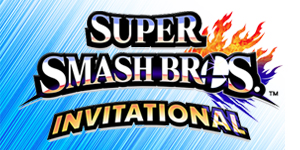Extra: The Great Nintendo Color Shift
For us in North America, the arrival of the 3DS XL was an extra long wait. While Japan and Europe first experienced the ginormous handheld weeks ago, we had to sit tight until this past Sunday. No big deal, right? Well, even after all that waiting, Nintendo of America only gave us half a launch. Japan received four color variants of the 3DS XL on day one: Blue/Black, Red/Black, Silver/Back, and pure White. Europe received all of these except White. America? We only got two: Blue and Red. As odd as this decision may seem, it actually makes sense when you look at the larger portable gaming market and Nintendo’s past color selections.
Going all the way back to the Game Boy Advance, Nintendo has offered a neutral color at launch. The original GBA arrived in the summer of 2001 in a shade of white, along with two variants of purple (one solid, one translucent). The GBA SP hit in March 2003 in a standard silver, as well as in cobalt blue. The Nintendo DS launched in November 2004 in silver, and the slimmer DS Lite arrived in June 2006 in white. Even the DSi launched in black, plus a light shade of blue, in April 2009. For eight solid years, Nintendo guaranteed that if you wanted a more subdued system color choice, you could have one.

Unfortunately for Nintendo, the landscape of the portable market changed during those eight years, threatening the company’s on-the-go gaming monopoly. The PSP, a solid black console, arrived in March 2005. Smartphones and tablets then began to take off a few years later, primarily being sold in black, silver, white, or combinations of the three. Nintendo needed something to stand out from these competitors. They needed to start making their handheld devices distinctly “Nintendo” and easily identifiable. They needed color.
The first signs of this idea of a color-based identity can be seen in the original DS. Yes, it launched in relatively tame silver. However, it was being pitted against the all-black PSP, which meant that that DS’s ho-hum color suddenly helped to define it in the portable gaming space. Nintendo further emphasized the ‘I’m not a PSP’ identity by releasing a slew of more vibrant color options, such as “Hot Rod” red and “Electric” blue. The color-pushing pattern continued with the DS Lite, which launched in white (the polar opposite of the PSP’s flagship color) and eventually saw an assortment of colors including red, blue, gold and even lime green. Sony countered with its own PSP color variations, but at least in the Americas, all of the PSP color options were more subdued than Nintendo’s.

While Nintendo continued to build out its DS Lite rainbow, smartphones and tablets began to offer legitimate competition in the gaming space, particularly in North America. Nintendo’s response to this can be seen in the launch of the DSi. No longer was there a subdued flagship color. Instead, both the black and ‘Nintendo-fied’ light blue models shared the limelight in all of the revamped handheld’s marketing. Likewise, the DSi XL’s marketing focused on its burgundy and dark brown colors, neither of which were colors used by other portable electronics. A similar move was made with the launch of the 3DS in March of last year. The system was offered in both blue and black, but Nintendo focused its marketing on the blue model.
From the DSi onward, Nintendo appears to have decided that one way to counter the growing threat of tablets and smartphones is to avoid any visual similarities to them. The DS and 3DS families already have the unique clamshell design, but avoiding commonly used smartphone colors like black, silver, and white can further help differentiate the products. They can further help to make people stop and ask about a 3DS or 3DS XL they may see on the street. It’s hard to say if this is the right strategy, but Nintendo certainly thinks so. And the company is sticking to this strategy with the 3DS XL, which is why even after an extra wait, North America is still missing out on those silver and white color options.




Interesting viewpoint. I do want an XL but refuse to buy it in Blue or Red. Personally, I think they should have at least a neutral one to cover their bases, but I am certain NA will receive additional colors down the road.
When I see red & blue, the first thing I think of is the U.S. flag. Would be interesting to see a white 3DSXL as the next (3rd) color for the west, eh? But the current selection of colors does stand out. Even if the colors aren’t that popular or attractive, you get people talking about how cool the colors are on the console or how ugly they are. And guess what? Free publicity! Many people will buy new things regardless, which would be one of the companies’ assets (established consumer). In the meantime, knowledge about the console increases over time via word of mouth and ads. Moderately invest now, create a new upcoming consumer base, identify the wants (in this case colors?), release products for profit. I’m no business man, and I’m sure it’s NOT as easy as I probably made it sound, but simple ideas tend to generate into more complex concepts required for business strategies I suppose. Likewise, Nintendo probably chose blue and red 3DSXLs not only of its reminiscence to the DS and conspicuity, but because they have been the most successful as well; again, securing a reliable asset.
We can only speculate on what the minds behind Nintendo are thinking, which without an M.B.A., it’s like trying to solve the mystery of the universe, even more so, women.
Thanks for the comments, guys! I think you’re both right that we’ll be seeing additional colors in the future (that’s pretty much a given when it comes to Nintendo handhelds), so it’ll be interesting to see if they continue to go with vibrant colors or address the growing market demand for neutral colors.